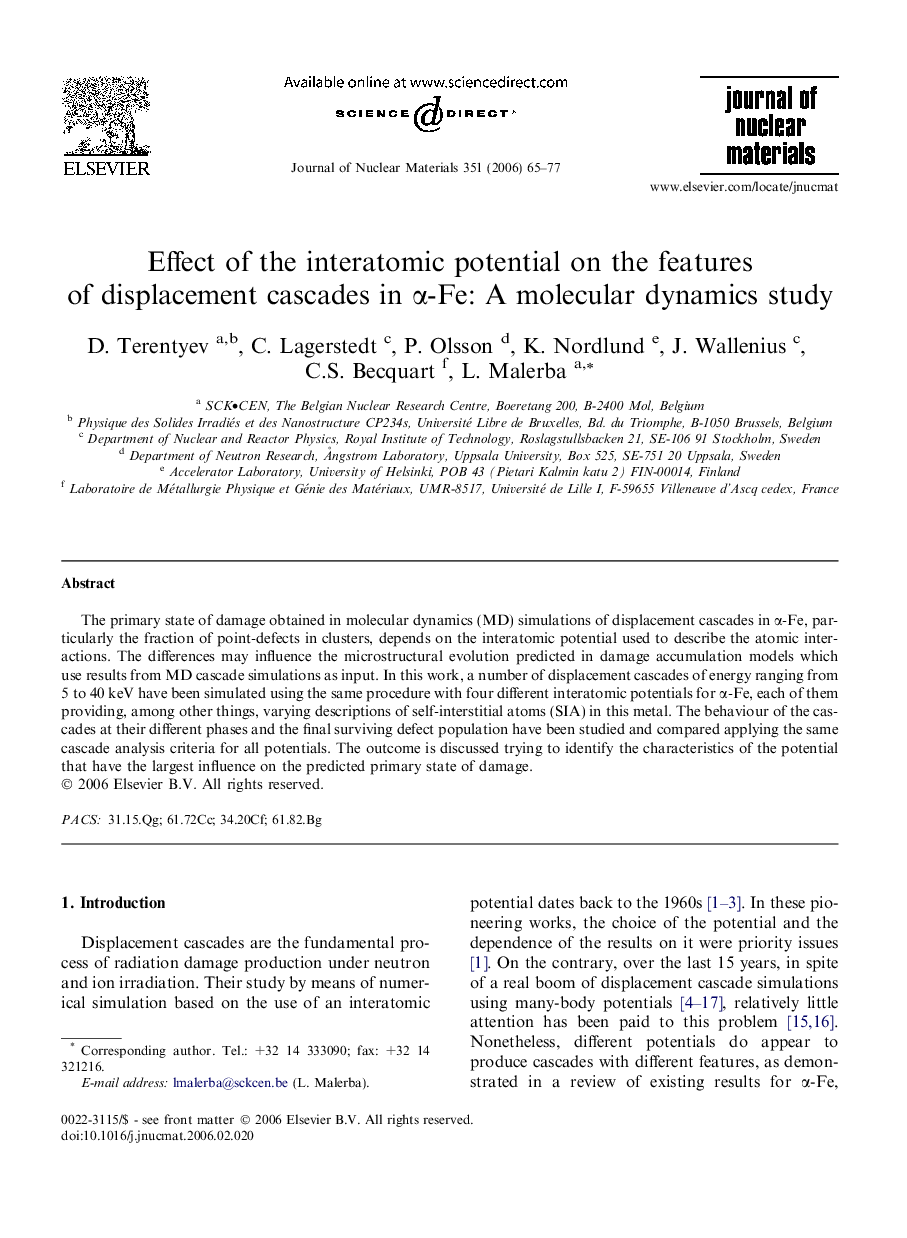| Article ID | Journal | Published Year | Pages | File Type |
|---|---|---|---|---|
| 1569861 | Journal of Nuclear Materials | 2006 | 13 Pages |
The primary state of damage obtained in molecular dynamics (MD) simulations of displacement cascades in α-Fe, particularly the fraction of point-defects in clusters, depends on the interatomic potential used to describe the atomic interactions. The differences may influence the microstructural evolution predicted in damage accumulation models which use results from MD cascade simulations as input. In this work, a number of displacement cascades of energy ranging from 5 to 40 keV have been simulated using the same procedure with four different interatomic potentials for α-Fe, each of them providing, among other things, varying descriptions of self-interstitial atoms (SIA) in this metal. The behaviour of the cascades at their different phases and the final surviving defect population have been studied and compared applying the same cascade analysis criteria for all potentials. The outcome is discussed trying to identify the characteristics of the potential that have the largest influence on the predicted primary state of damage.
